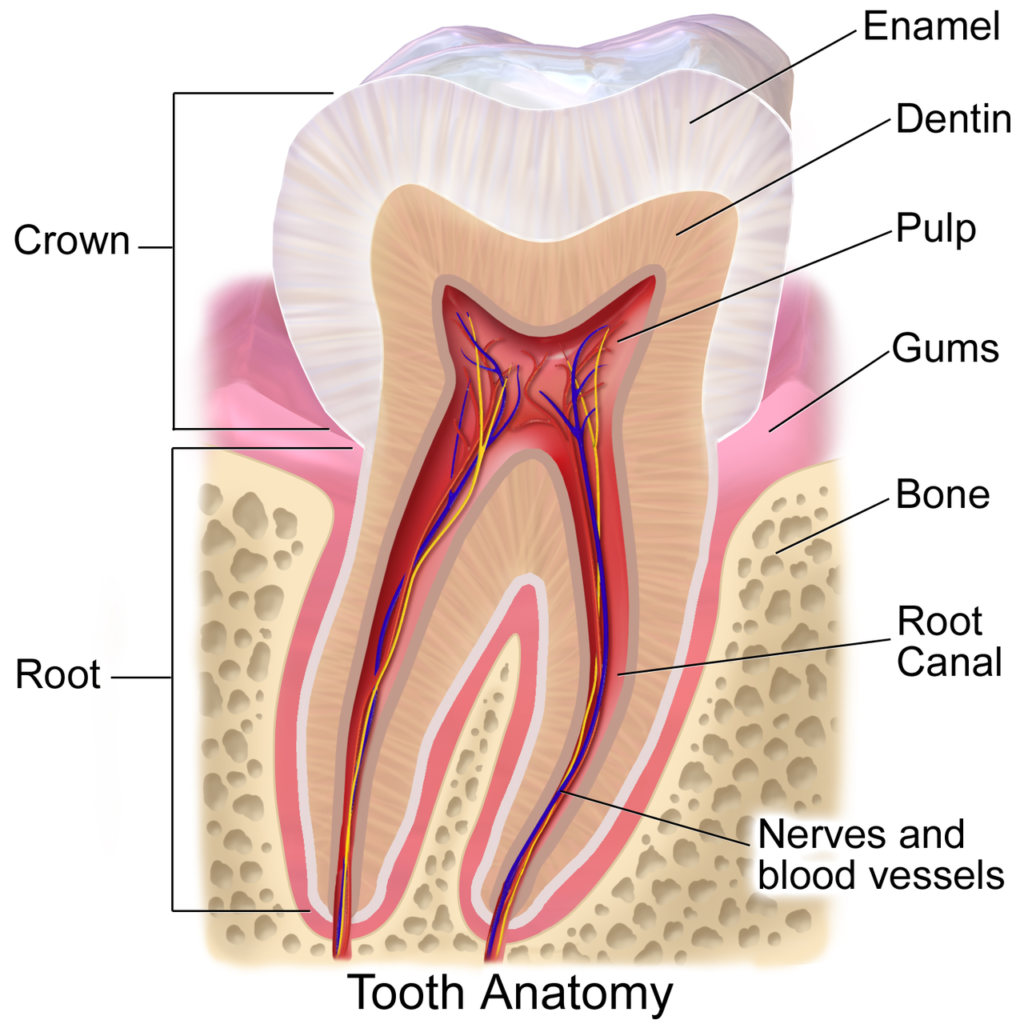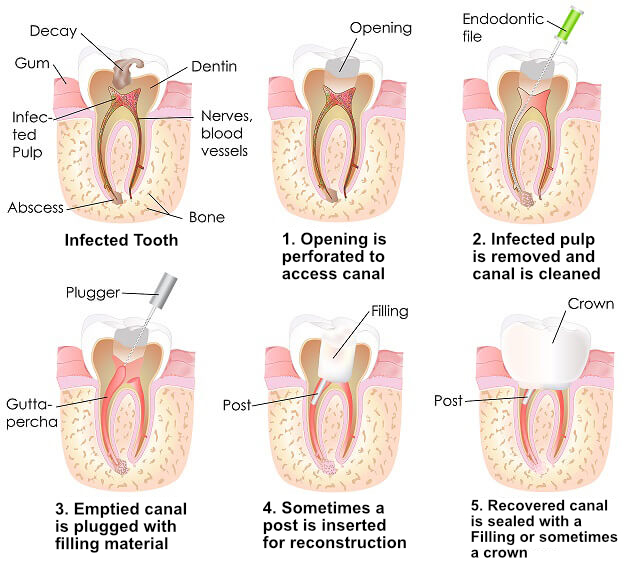Root Canal Treatment
What is Root Canal Treatment?
Root canal treatment involves removing the damaged or diseased pulp of a tooth, which is the tissue inside of a tooth that contains blood vessels and nerves. Your teeth are meant to last a lifetime. However, if your tooth becomes diseased or injured, it can often be saved with root canal therapy.
While your tooth may appear to be one solid piece, it has many layers. There are two main parts of your tooth... the crown and the root. The crown is the part of your tooth that you can see. The root is the part of the tooth below the gumline in the jawbone that is not visible.
Inside of the crown is the pulp chamber, which continues toward the tip of the root in what is called the root canal. In each root, there may be one or more root canals. These root canals contain the dental pulp, which is made up of nerves and blood vessels and extends all the way down to the tip of each root. When that pulp tissue becomes infected or inflamed, root canal therapy becomes necessary. Root canal therapy is a dental procedure that removes injured or infected dental pulp from the root canal.
Anatomy of a healthy tooth

Crown: part of the tooth you can see
Dentin: the inner tissue that's located beneath the enamel
Enamel: hard outer covering of the tooth
Jawbone: bone that supports the tooth
Gums (gingiva): soft tissues that help support the tooth and hug your teeth tightly
Pulp Chamber: space inside the tooth for the nerve and blood vessels
Root: part of the tooth inside the bone socket
Root Canal: passageway for nerves and blood vessels
What can cause disease or injury to the pulp of a tooth?
The most common causes of pulp damage or death are:
- a cracked or chipped tooth
- a deep cavity or filling
- a leaking filling
- complications from large fillings
- other injuries to the tooth
All of these can cause infection and/or inflammation.
Problems caused by infected or inflamed pulp
The infection and inflammation in the pulp can spread to the tissues around the root of the tooth. This can cause pain and swelling and can lead to the formation of a pus-filled sac called an abscess. Even if there is no pain, bacteria from the infection can damage the bone that holds the tooth in your jaw.

A tooth abscess
What happens if a necessary root canal treatment is not done?
Without root canal therapy, infection and damage will continue and your tooth most likely will need to be removed. As previously mentioned, pus can build up at the root tip of a tooth, forming an abscess. An abscess can destroy the jawbone surrounding the tooth and may cause severe pain and in more advanced and serious cases, can lead to serious illness and even death as the infection spreads to the head, brain, heart, and other body parts.
Not only can root canal therapy save a tooth, but it can also prevent infection which can dangerously spread to other parts of the body.
General steps of root canal therapy
- Your tooth is numbed for your comfort. A thin, flexible sheet of non-latex material called a dental dam is placed over your tooth to keep it dry.
- An opening is made through the crown of the tooth into the pulp chamber.
Your tooth's pulp is removed from the pulp chamber and the canal of each root of the tooth.
Each canal is cleaned, shaped and disinfected so that it can be filled. - The treated root canals are filled with a rubber-like material to seal them.
- A temporary filling is placed in your tooth to prevent infection of the root canals.
- Eventually, the temporary filling is removed and the tooth is restored with a permanent filling to recover its function and shape and improve its appearance. Sometimes a crown is recommended for long-term durability.
Note that root canal therapy may involve one or more dental visits.
After treatment
Most patients have very little or mild discomfort after a root canal treatment, which can usually be managed with over-the-counter medication.
- If you feel severe pain or pressure for more than a few days, have visible swelling or if your bite feels uneven, be sure to contact us.
- After your root canal procedure, avoid biting down or chewing with the affected tooth until it is fully restored with a crown.
- Make sure to continue brushing twice daily and cleaning between your teeth once a day to keep the area clean and free from infection.
For your root canal treatment to be successful, it is very important that you follow these instructions noted above and those given to you by our dental team, and that you attend all of your recommended follow-up appointments.
How long will the restored tooth last?
When properly restored and maintained, a tooth with a root canal filling can last for many years. However, like any other tooth, it can become decayed or fractured or the tissue around it can get gum disease. Professional cleanings by a dental hygienist and regular dental exams will help keep your mouth healthy – whether you've had root canal therapy or not.
Let us put your mouth and mind at ease...
Don’t let the fear of root canal treatment stand in the way of saving your teeth and staying healthy.
At Brantford North Dental, we are here to ensure your comfort and dental wellbeing. Rest assured that we are here to help with our gentle dentistry and knowledgeable staff. We will review the process with you, answering any questions you may have about what you can expect during and after the procedure. Dr. Deskin performs many, many root canal treatments and so often his patients are pleasantly surprised by how easy the process ends up being!



